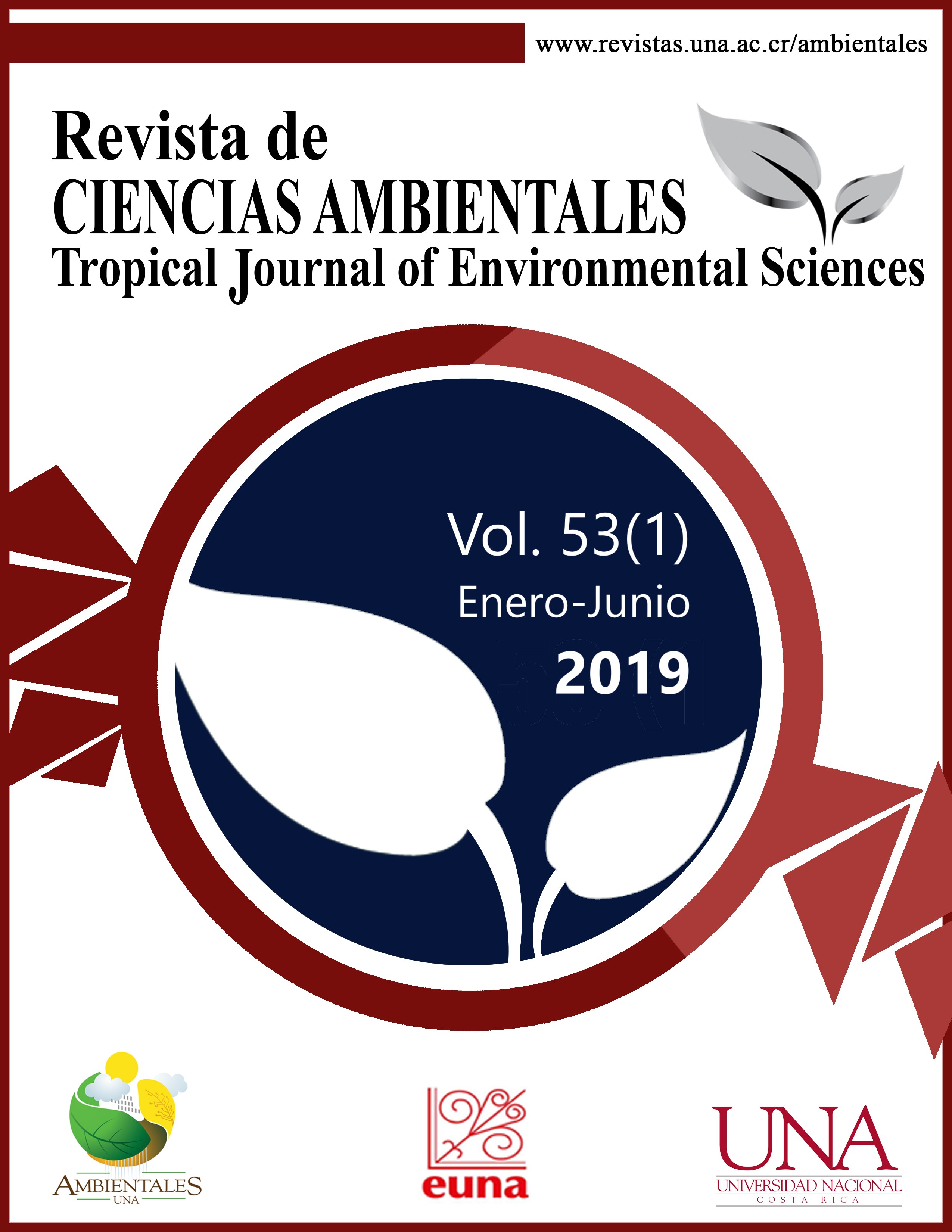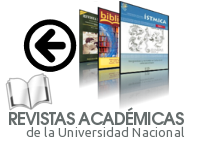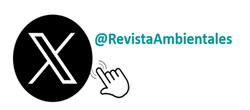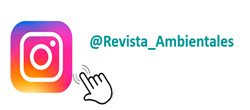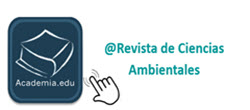Preliminary Assessment of Agricultural Area and its Influence to the Quality of Water in Golfo Dulce, Costa Rica
DOI:
https://doi.org/10.15359/rca.53-1.5Keywords:
Estuary; crops, Golfo Dulce; pollution; rice, oil palm.Abstract
With the purpose of designing a quality control program of the waters entering the estuary, a preliminary assessment of agricultural activity was done in the sub-basins Esquinas, Coto Colorado, Rincón, Conte, Agujas, Tigre, and Palma. The extension of the cultivated area was determined through interpretation of satellite images. With secondary information and surveys to producers, the use of pesticides and fertilizers was estimated. A point sampling was done for pesticide residues in water, sediment, and fish. The samples were analyzed with gas chromatography with mass detection and liquid chromatography with a diode array detector. An area of 10,000 ha of rice Oryza sativa and 31,000 ha of oil palm Elaeis guineensis plantations was estimated. Annual use of pesticides was estimated in 20.4 kg ha-1 in rice and 6.6 kg ha-1 in oil palm, and 840 kg ha-1 yr-1 of granulated fertilizers in both crops. The herbicide clomazone was detected in all water samples. Furthermore, in the Coto Colorado sub-basin, which encompasses 95 % of the total agricultural area that drains into the gulf, the insecticide triazophos and fungicides isoprothiolane and propiconazole were also detected. The extension and management of agricultural plantations in the watershed that drains into the Golfo Dulce, in addition to its environmental factors, could pose a threat to the estuary resources. It is advisable to monitor the quality of water in rivers, as well as to develop programs for the restoration of the riparian forests as a mitigation measure.
References
American Public Health Association [APHA]. (2005) Standard Methods for the Examination of Water and Wastewater. Washington DC: APHA.
Araya-Alpízar, C. y Galindo-Villardon, M. P. (2009). Tamaño de la muestra en investigación clínica. Medicina Clínica, 133(1), 26-30. https://doi.org/10.1016/j.medcli.2008.10.048
Beketov, M. A., Kefford, B. J., Schäfer, R. B., & Liess, M. (2013). Pesticides reduce regional biodiversity of stream invertebrates. Proceedings of the National Academy of Sciences of USA, 110(27), 11039-11043. https://doi.org/10.1073/pnas.1305618110
Bravo, V., de la Cruz, E., Herrera, G., y Ramírez, F. (2013). Uso de plaguicidas en cultivos agrícolas como herramienta para el monitoreo de peligros en salud. Uniciencia, 27(1), 351-376.
Chacón-Chaverri, D., Martínez-Cascante, D., Rojas, D. y Fonseca, L.G. (2015). Golfo Dulce, Costa Rica, un área importante de alimentación para la tortuga carey del Pacífico Oriental (Eretmochelys imbricata). Revista Biología Tropical, 63(1), 351-362.
Cortés, J. (1992). Los arrecifes coralinos de Golfo Dulce, Costa Rica: Aspectos ecológicos. Revista Biología Tropical, 40(1), 19-26.
Dosskey, M. G., Vidon, P., Gurwick, N. P., Allan, C. J., Duval, T. P., & Lowrance, R. (2010). The Role of Riparian Vegetation in Protecting and Improving Chemical Water Quality in Streams. Journal of the American Water Resources Association, 42(2), 261-277. https://doi.org/10.1111 ⁄ j.1752-1688.2010.00419.x
Echeverría-Sáenz, S., Mena, F., Pinnock, M., Ruepert, C., Solano, K., de la Cruz, E., Campos, B., Sánchez-Ávila, J., Lacorte, S., & Barata C. (2012) Environmental hazards of pesticides from pineapple crop production in the Río Jiménez watershed (Caribbean Coast, Costa Rica). Science of the Total Environment, 440, 106-114. https://doi.org/10.1016/j.scitotenv.2012.07.092
Echeverría-Sáenz, S., Mena, F., Arias-Andrés, M., Vargas, S., Ruepert, C., Van den Brink, P., Castillo, L.E. & Gunnarsson, P.S. (2018) In situ toxicity and ecological risk assessment of agro-pesticide runoff in the Madre de Dios River in Costa Rica. Environmental Science and Pollution Research, 25, 13270–13282. https://doi.org/10.1007/s11356-016-7817-4
Environmental Protection Agency [EPA]. (2007a). Method 3546 Microwave extraction. Test Methods for Evaluating Solid Waste: Physical/Chemical Methods. SW 846. Recuperado de https://19january2017snapshot.epa.gov/sites/production/files/2015-2/documents/3546.pdf
Environmental Protection Agency [EPA]. (2007b). Clomazone Summary Document: Registration Review. Recuperado de https://archive.epa.gov/oppsrrd1/registration_review/web/pdf/clomazone_summary.pdf.
Ewel, K. C., Twilley, R. R & Ong, J. E. (1998). Different kinds of mangrove forests provide different goods and services. Global Ecology & Biogeography Letters, 7, 83-94. https://doi.org/10.2307/2997700
Fournier, M. L., Echeverría-Sáenz, S., Mena, F., Arias-Andrés, de la Cruz E., Ruepert, C. (2018). Risk assessment of agriculture impact on the Frío River watershed and Caño Negro Ramsar wetland, Costa Rica. Environmental Science Pollution Research, 25, 13347-13359. https://doi.org/10.1007/s11356-018-1887-4
Gil, Y. & Sinfortc, C. (2005). Emission of pesticides to the air during sprayer application: A bibliographic review. Atmospheric Environment, 39(28), 5183-5193. https://doi.org/10.1016/j.atmosenv.2005.05.019
Howarth, R. (2008). Coastal nitrogen pollution: A review of sources and trends globally and regionally. Harmful Algae, 8, 14-20. https://doi.org/10.1016/j.hal.2008.08.015
Lei, Z. (2002). A Marine and coastal dynamics and primary production response in Golfo Dulce, Costa Rica. A multi-sensor satellite approach (Tesis de maestría). International Institute of Geoinformation and Earth Observation, The Netherlands.
Lindgren, D. T. (1985). Fundamentals of photointerpretation. In Land use planning and remote sensing. Remote Sensing of Earth Resources and Environment (vol. 2). Dordrecht, Holland: Springer. https://doi.org/10.1007/978-94-017-2035-9_4
Mena, F., Fernández, M., Campos, B., Sánchez-Ávila, J., Faria, M., Pinnock, M., de la Cruz, E., Lacorte. S., & Barata, C. (2014). Pesticide residue analyses and biomarker responses of native Costa Rican fish of the Poeciliidae and Cichlidae families to assess environmental impacts of pesticides in Palo Verde National Park. Environmental Biology, 35, 19-27.
Ministerio de Agricultura y Ganadería [MAG] (2008). Decreto N.° 34687. Reglamento de Límites Máximos Microbiológicos y de Residuos de Medicamentos y Contaminantes para los Productos y Subproductos de la Pesca y de Acuicultura Destinados al Consumo Humano. La Gaceta, San José, Costa Rica.
Morales-Ramírez, A. (2011). La diversidad marina del Golfo Dulce, Pacífico Sur de Costa Rica: Amenazas a su conservación. Biocenosis, 24(1-2), 9-20.
Moss, B. (2008). Water pollution by agriculture. Philosophical Transactions of the Royal Society, 363, 659–666. https://doi.org/10.1098/rstb.2007.2176
Ramírez, F., Bravo, V. y de la Cruz, E. (2014). Importación de plaguicidas en Costa Rica: Periodo 1980-2012. Informe interno, Área de Diagnóstico. Heredia, Costa Rica: IRET-UNA.
Ramírez-Muñoz, F., Bravo-Durán, V., y Herrera-Ledezma, G. (2017). Uso del herbicida glifosato en Costa Rica en el periodo 2007 a 2015. Uniciencia, 31(1), 59-72. https://doi.org/10.15359/ru.31-1.7
Rincón-Alejos, F. y Ballestero-Sakson, D. (2015). Hidrografía y plumas estuarinas en Golfo Dulce, Pacífico Sur de Costa Rica. Revista Biología Tropical, 63(2), 161-181.
Sarmento, M., Chaves, A., Retamosa, M., Ruepert, C., Jiménez, R., y Blanco, K. (2015). Análisis descriptivo de las condiciones de conservación de un sitio de forrajeo de la tortuga verde del Pacífico (Chelonia mydas agassizii, Testudines: Chelonioidea) en el Golfo Dulce, Costa Rica; se toma como base el estado de salud de la tortuga y el hallazgo de plaguicidas en el ambiente. Rev. Ciencias Veterinarias, 33(2), 81-96. https://doi.org/10.15359/rcv.33-2.3
Sheaves, M., Johnston, R., Millera, K., & Nelson, P.N. (2018). Impact of oil palm development on the integrity of riparian vegetation of a tropical coastal landscape. Agriculture, Ecosystems and Environment, 262, 1-10. https://doi.org/10.1016/j.agee.2018.04.011
Sistema Nacional de Áreas de Conservación [SINAC]. (2008). Mapa de áreas silvestres protegidas, escala 1:50 000 en formato shape de ESRI. Atlas de Costa Rica. San José, Costa Rica.
Smedes, F. (1999). Determination of total lipid using non-chlorinated solvents. Analyst, 124(11):1711-1718. https://doi.org/10.1039/A905904K
Solano, J. y Villalobos, R. (2001). Aspectos fisiográficos aplicados a un bosquejo de regionalización geográfica climática de Costa Rica. Tópicos Meteorológicos, 8(1), 26-39.
Spongberg, A. L. & Davis, P. (1998). Organochlorinated pesticide contaminants in Golfo Dulce, Costa Rica. Revista Biología Tropical, 46, 111-124. https://doi.org/10.15517/rbt.v46i6.29650
Spongberg, A. L. (2004). PCB Contaminations in marine sediments from Golfo Dulce, Pacific coast of Costa Rica. Revista Biología. Tropical, 52(2), 23-32.
Svendsen, H., Rosland, R., Myking, S., Vargas, J. A., Lizano, O. G., & Alfaro, E. J. (2006). A physical-oceanographic study of Golfo Dulce, Costa Rica. Revista Biología Tropical, 54(1), 147-170. https://doi.org/10.15517/rbt.v54i1.26848
University of Hertfordshire. (2018). PPDB: Pesticide Properties DataBase. Recuperado de http://sitem.herts.ac.uk/aeru/footprint/es/Reports/408.htm#2
Wolff, M., Hartmann H. J., Koch V. (1996). A pilot trophic model for Golfo Dulce, a fjord-like tropical embayment, Costa Rica. Revista Biología Tropical, 44(3), 215-231.
Yáñez-Arancibia, A. (1978). Taxonomía, ecología y estructura de las comunidades de peces en lagunas costeras con bocas efímeras del Pacífico de México. México D.F. México: Centro de Ciencias del Mar y Limnología-UNAM.
Downloads
Published
How to Cite
Issue
Section
License

This work is licensed under a Creative Commons Attribution-NonCommercial-ShareAlike 4.0 International License.

